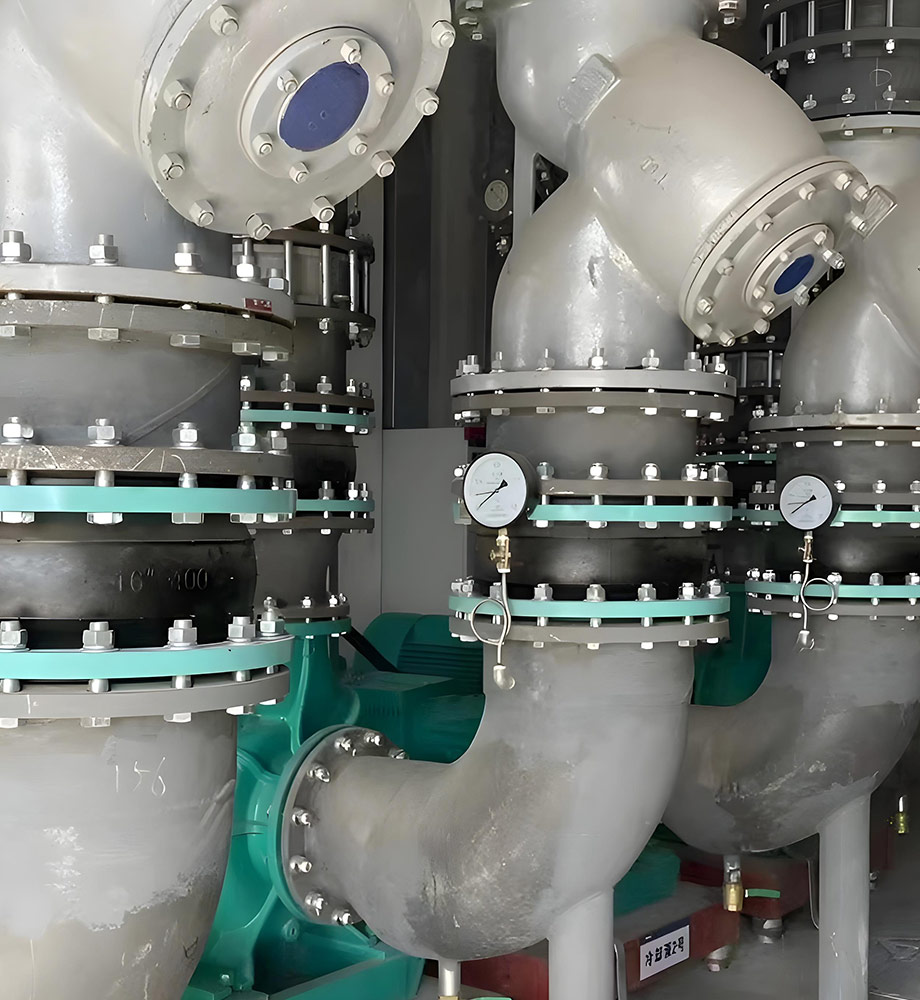Key Features
- Low Spring Rate: FRP systems require expansion joints that are softer than their pipes. Modern FRP-rated joints use special arch designs that provide the lowest possible spring force, ensuring the joint rather than the pipe moves.
- Multi-Directional Flexibility: Quality FRP expansion joints handle axial compression/extension as well as lateral offset, angular deflection and torsion. They are often advertised as “suitable for compression, extension, lateral and torsional movements”.
- Lightweight Construction: FRP-compatible joints (e.g. Holz 320EZ series) weigh roughly half as much as standard rubber joints of the same size, easing handling and installation.
- Fire- and Weather-Resistant: Typical FRP joints use EPDM or Nitrile rubber with coatings; these elastomers maintain flexibility in a wide temperature range and are UV-resistant for outdoor use.
Benefits
- Stress Relief: By flexing with temperature changes or vibration, expansion joints protect the FRP piping integrity and eliminate peak loads on flanges and supports.
- Leak-Free Seals: Bonded rubber or fabric linings ensure a tight seal; many joints are hydro-tested to certify zero leakage at design pressure.
- Space-Efficient: FRP-oriented joints (e.g. “lightweight piping joints”) often require shorter anchor spacing and fewer supports than metal bellows, due to their flexible design.
- Cost Saving: Reduced anchoring requirements and maintenance (no lubrication needed like metal bellows) lower total installed cost.
Applications
FRP expansion joints are installed in chemical processing, power generation scrubbers, air pollution control systems, and industrial ducting where FRP pipes may see thermal swing or vibration (e.g. pump discharge piping). They’re also used in HVAC systems (FRP ductwork), desalination plants, and any large FRP pipe run where differential expansion is expected. In essence, any FRP piping network with long runs, hot fluids or reciprocating equipment will include at least one expansion joint for protection.
Technical Specifications
- Joint Types: Common FRP-compatible designs include fabric-reinforced neoprene/EPDM arch-type, or rubber-sleeve joints. These are usually flange-to-flange (ANSI or DIN drilled).
- Size Range: Available from small (DN 50) to very large (DN 1200+) to match pipe diameters. Specialty manufacturers also make composite bellows for large stacks or vessels.
- Pressure/Temperature: Rated typically 1–6 bar (15–90 psi) for standard rubber joints. Temperature limits ~120°C for EPDM covers, ~80–100°C for nitrile (varies by model).
- Movement Capacity: Joints are specified by allowable movement: e.g. ±5 mm axial, ±5 mm lateral, ±1° angular per foot. FRP-specific joints allow the lowest force for a given deflection.
Unique Selling Points (USPs)
- FRP-Optimized Design: These joints are specifically engineered for FRP piping. For example, the 320EZ series advertises “lowest spring rates in the industry: ideal for FRP piping”. This means they yield to movement under very low forces, unlike stiff metal bellows.
- Complete Flexibility: The “lowest force” design allows using lighter anchors/supports. One can eliminate heavy tie-rods or thrust bearings, saving weight and cost.
- Longevity: Premium FRP joints use smooth inner rubber faces that resist wear and allow tens of thousands of cycles. Combined with corrosion-resistant covers, they outlast generic joints in chemical service.
- Maintenance-Friendly: No moving metal parts means no lubrication. If a joint needs replacement, the lightweight and flange-to-flange style make swaps fast (sick pipes often only take minutes to unbolt).
- Customization: Joint materials (Buna, EPDM, Viton) can be selected to match chemical compatibility of the FRP pipe’s fluid. Optional arc shields and wear plates are available for high-velocity flows.

